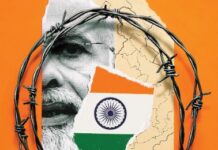Pakistan is a growing economy. Pakistan’s agriculture sector continues to be the largest sector and a dominant driving force for economic growth. The rural population seeks it as the main source of earning and a critical means to ensure food availability for people in both rural and urban areas. Agriculture is also the main sector of the economy which provides raw material to industrial units, like textile, sugar, leather and feed mills. In short, agriculture itself has export potential, like, say, in the shape of rice, and it is raw material provider to several export-oriented industries.
According to a report by the Small and Medium Enterprises Development Authority (Smeda), titled ‘Dairy and Livestock Sector of Pakistan’, the livestock subsector is contributing 60-70 per cent to value-added agriculture and 11.53pc to the national gross domestic product (GDP). It is comparatively less inconsistent in terms of output compared to the other agriculture subsectors.
In fact, Pakistan ranks among top five milk producing countries globally. Dairy and livestock sector comprises around 80 million cows and buffaloes and 100 million sheep and goats, producing more than 60 million tonnes of milk besides producing, among other things, meat and hides.
Within the domain of livestock, milk is the most important commodity, with demand growing 10-15pc annually. Yet, the production is increasing by only 3-4pc annually. Due to the supply gap of 3.5 billion litres in 2020-21, value-added products, such as cheese, butter and powdered milk, were imported to meet rapidly rising domestic demand. Bridging the milk supply gap is a big challenge for policymakers in Pakistan.
There is a dire need to bring the livestock sector on the development agenda, conceiving a top down framework to meet the demand and supply gap with the aim of improving its GDP contribution and ensuring larger socioeconomic development and growth.
The reasons behind this prevailing gap are efficiency losses in the production process, lack of awareness in farmer and producer communities for increasing milk output, lack of inter-linkages with the value and supply chain, policy issues and resource restraints regarding implementation of initiatives at the macro level.
The current scenario within the dairy sector does not give a reason to expect much. In order to meet existing and potential domestic demand, major reforms need to be introduced in the sector. Conventional milk production, collection and distribution do not meet quality and hygiene standards, which are further intensified by inappropriate facilities of storage and transportation as well as impurity of the product itself.
These issues make it difficult to achieve desirable growth and trade targets.
Policy measures are needed to improve the sector’s overall performance and growth. There are numerous opportunities available in the sector for people to integrate and produce value-added products that may cater to domestic demand of a large customer base, and even target export to international markets where food security is a rising concern.
FURQAN HYDER SHAIKH
HYDERABAD






















